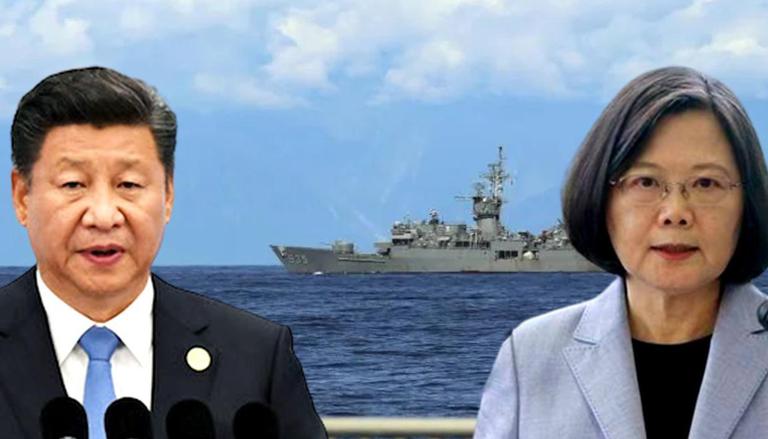QUAD eye on fishy fishing by china’s vessels near neighbour’s sea
A new controversy may arise between China and the West over the latter’s initiative to curb illegal fishing in the Indo-Pacific. Though it would never admit it, China is accused of being the biggest beneficiary of not-so-legal fishing, so much so that there is a risk of fish stock being depleted in the Pacific and the seas near the Chinese’ coast.
The initiative is spearheaded by the Quad initiative, with the US, Japan, Australia, and India having thought of it. Reuters said at that time, a couple of months ago, that “the maritime initiative will use satellite technology to create a tracking system for illegal fishing from the Indian Ocean to the South Pacific by connecting surveillance centers in Singapore and India”. It “will enable these countries to monitor illegal fishing even when the boats have turned off the transponders which are typically used to track vessels”.
The Reuters report hit the nail o n the head when it said: “Several countries in the Indo-Pacific region chafe at China’s vast fishing fleet. They say its vessels often violate their exclusive economic zones and cause environmental damage and economic losses.”
Even Chinese experts are now beginning to admit that “global fish stocks are facing a crisis, with nearly all classified as either fully fully exploited, overexploited or significantly depleted”. China is the largest contributor to this problem as a world leader in both fishery exports and imports, according to a paper by Dr Hongzhou Zhang of Nanyang Technological University, Singapore, and Genevieve Donnellon-May a master’s candidate in Water Science. It is “simultaneously responsible for 15 per cent of the global total of caught fish and one-third of fish consumption worldwide”, they say.
China has remained a major fish producer, accounting for 35 percent of global fish production in 2018. Excluding China, a significant share of production in 2018 came from Asia (34 percent), followed by the Americas (14 percent), Europe (10 percent), Africa (7 percent) and Oceania (1 percent). In addition to being the major fish producer, China has been the main exporter since 2002 and, since 2011, the third major importing country in terms of value. Norway has been the second major exporter since 2004, followed by Viet Nam (since 2014), India (since 2017), Chile and Thailand.
China’s enormous fishing fleet is often accused of overfishing far beyond the country’s territorial waters. Research suggests that Chinese fishing fleets have trespassed into the waters of over 90 countries and depleted stocks. With the increasing geopolitical tension between the United States and China, “greater attention is being paid to illegal, unreported and unregulated (IUU) fishing by Chinese fishing vessels in the Asia Pacific”. The Quad initiative comes in the wake of this menace in the Indo–Pacific.
China has always been a coastal fishing nation. Originally, it used to net what is called trash fish – smaller, cheaper coastal and bottom-dwelling fish species. In the last three decades, however, its tastes have improved. The fishing activities, accordingly, evolved. It subsequently raised a Distant Water Fishing (DWF) fleet to cater to the ever-growing demand for wild-caught fish. The fleet operates outside of a nation’s territorial waters of the exclusigv economic zone. When caught, they deny having violated any rules. These fleets fly under flags of convenience and take advantage of several loopholes in the laws. In 2018, China reported about 2.26 million tonnes from its “distant-water fishery”, but provided details on species and fishing area only for those catches marketed in China (about 40 percent of the total for distant-water catches).
In January 2022, China’s Ministry of Agriculture released its 14th five-year plan for fishery development. The key message of the plan is that China will continue pushing for a significant restructuring of its fishery sector. Going into the background of the fishery policy, the research paper says that since 1978, the development of China’s fishery sector has been heavily influenced by the central government’s policy and can be divided into four period. During the first period from 1979 to the mid-1990s, the fishery sector “primarily aimed to increase output to meet growing demand for fishery products”.
In the second period from 1995 to 2010, “overfishing, land reclamation and industrial pollution had depleted stocks severely in China’s traditional fishing grounds”. The central government responded by “curbing overfishing in the marine catch sector and focussed on the growth of aquaculture”.
From the mid-1990s, China introduced a fishing license system to reduce the size of its fishing fleet. But in 2006 a “fishing fuel subsidy caused the fishing vessel building industry to boom” and this “combination of depleted Chinese fishing stock and the increased number of fishing vessels built encouraged Chinese fishery operations to expand outwards”.
During the third period from 2011 to 2015, the central government shifted its policy focus “to catch more and further expand aquaculture production”. The increased support from central and local governments for outward expansion of the country’s marine fisheries sector amid rising tensions in the caused significant “diplomatic friction with China’s neighbours”.
From 2016 onwards, China sought to reduce both its island and marine catch sectors while expanding its acquaculture. The 13th five-year plan “indicated China’s goal of reducing both its fishing fleet and total catch by 2020, and cut its notorious illegal fleets.
The 14th plan places limits on marine catches in Chinese coastal waters remaining at 10 million tones and further reduced the number of large- and medium-sized fishing vessels. It claimed to have also taken steps to strictly controlling the size of its distant water fishing fleet.
In 2022, China even ended its fishing fuel subsidies and established fishery stewardship subsidies. But the rising demand for fishery products and critical role of the fishing sector in China’s food security strategy has led to further increases in its annual total fishery output from 65.47 million tonnes in 2020 to 69 million tonnes in 2025, according to the research paper.
But the question is, how long can China sustain these caps on fishing and legal measures to fish, given the unchecked growth in domestic demand for fish. As the middle class gains more purchasing power, the craving for better and expensive fish is also growing.












